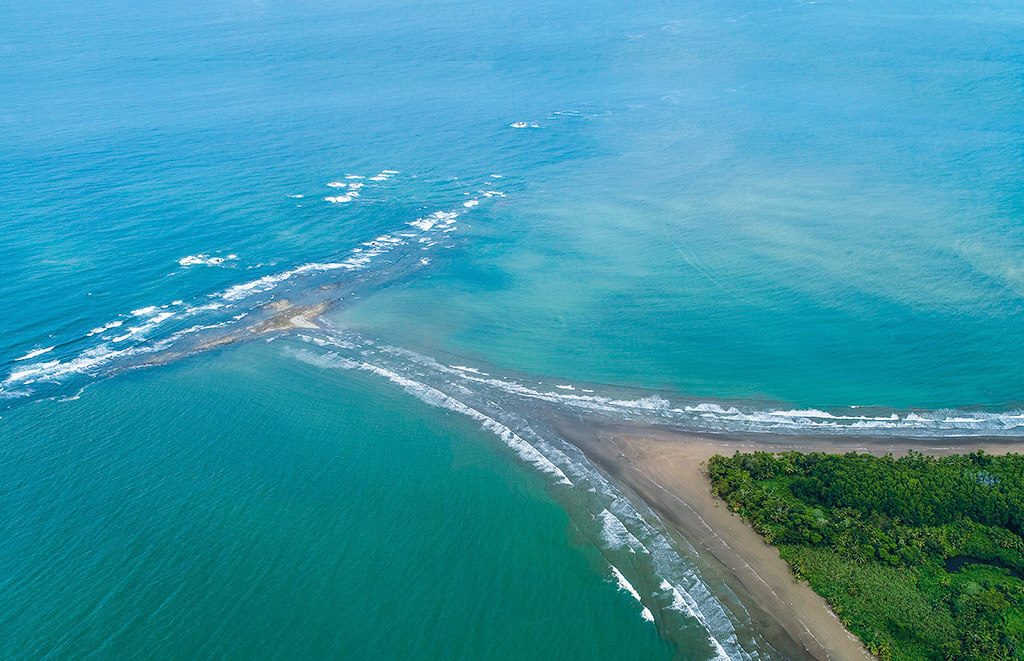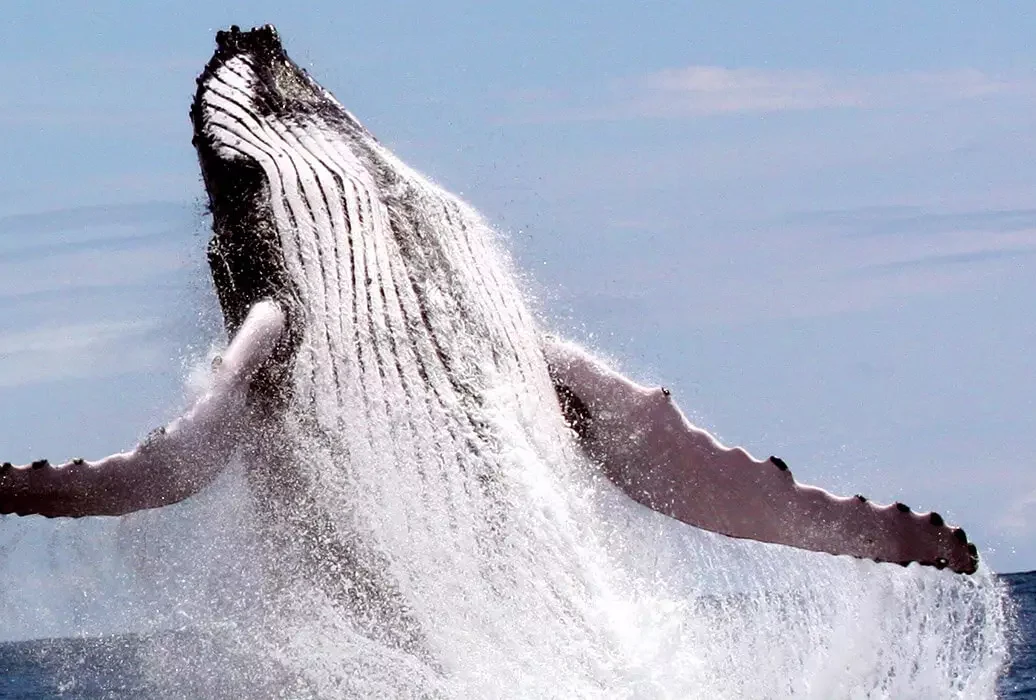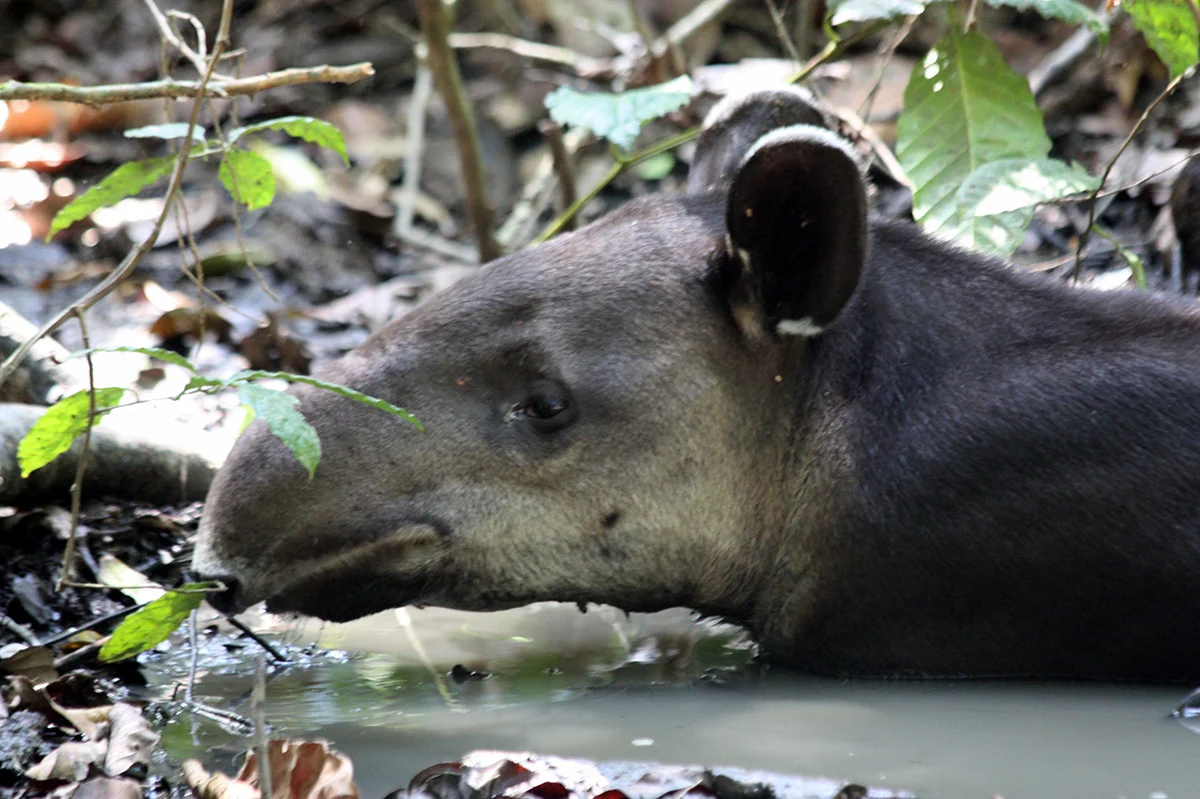
Marino Ballena National Park is located in the province of Puntarenas, on the southern Pacific coast of our country.
This national park has an extension of 110 terrestrial and 5,375 marine hectares and was created on December 14, 1989.
Although the park mainly extends in the maritime area, it also has within its protected areas a series of beaches of special beauty, among them we can mention Ballena Beach, Uvita Beach, Arco Beach and Piñuelas Beach; and although Ventanas Beach is not part of this National Park, it has a great attraction: the caves, which are distributed both in the sea and on the beach. At low tide you can walk through them and on whale watching tours you can go through one of the caverns in the sea in a boat.
This park was created with the main objective of protecting the coral reefs that are in Punta Uvita and Roca Ballena, and also to protect the whales that migrate from the northern and southern hemispheres to our waters to procreate and have their calves as well.
Also among the marine species that can be found in the park’s waters are spotted dolphins, bottlenose dolphins, green and olive ridley turtles, as well as a great variety of reef fish and starfish, among others.
The Tombolo of Punta Uvita or “The Tail of the Whale”.
Within the Marino Ballena National Park is one of the most interesting geological formations, which generates great interest internationally: the Tómbolo de Punta Uvita, popularly known as the Moses Passage, which resembles the tail of a whale when viewed from a high place or from the air and which appears only during low tide.
Visitors can walk over it and swim in either of its two pools, where the water is very calm and warm, and enjoy the magnificent views of the mountains rising above the shore.
The Tombolo is a sandbank that joins an ancient island or islet to the coast, a sedimentary geographic feature. The Punta Uvita Tombolo is characterized by the deposit of sands (terrigenous and biogenic) on the crest of the rocks that join the head of the tombolo with the coast, forming the figure of a whale’s tail recognized today at international level.
Curious facts about the Humpback Whale:
Did you know?
- Its scientific name is Megapteranovaengliae and it is also called humpback whale.
- After the international ban on hunting humpbacks in the 1960s, they recovered and the population began to increase.
- There is a population of approximately 10,000 humpback whales.
- Males measure 15 to 16 meters, females 16 to 17 meters. The average weight is 40 tons.
- It has between 16 and 20 ventral grooves. These are parallel folds that run from the jaw to the navel and allow a large opening of the mouth.
- The characteristic beards filter water by retaining food and have between 270 and 400 beards on each side of the mouth.
- They have offspring usually every two to three years. Pregnancy lasts eleven months and the calf can measure between 4 and 4.5 meters at birth and weigh approximately 700 kilos. They suckle for approximately 6 months and leave their mothers at two years of age when they reach approximately 9 meters in length and reach sexual maturity at five years of age.
- They feed only during the summer and live on their fat reserves during the winter (migration to Costa Rica).
- Comenkrill and small fish like herring
- The most characteristic fishing technique they use is the bubble net. Several whales surround groups of fish from below, expelling air until they form a bubble net that closes around the fish, making them rise to the surface. The whales then rise to the surface, camouflaged by the thick cloud of bubbles, and with their mouths open, manage to catch thousands of fish in one go. The bubble net created by sets of whales (even 12 whales) can reach a diameter of 30 meters!
- They generally live between 40 and 50 years.


